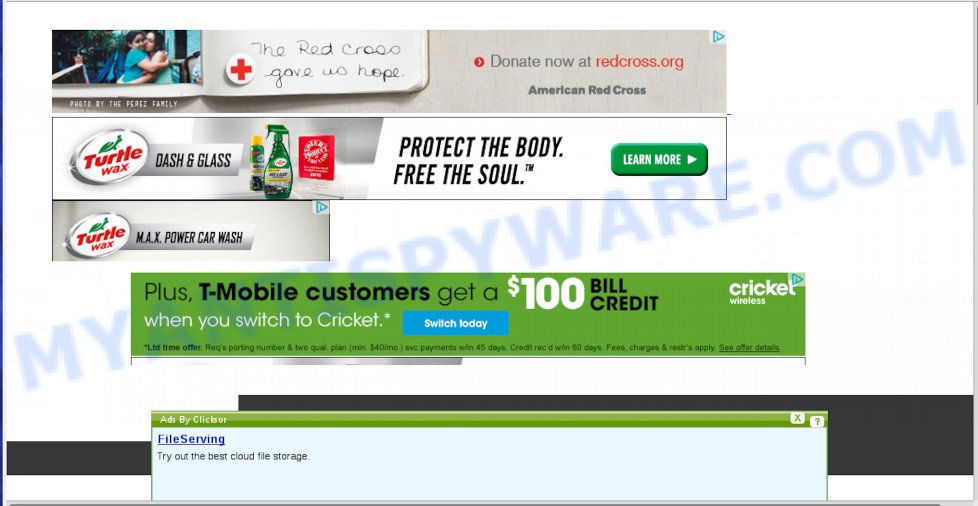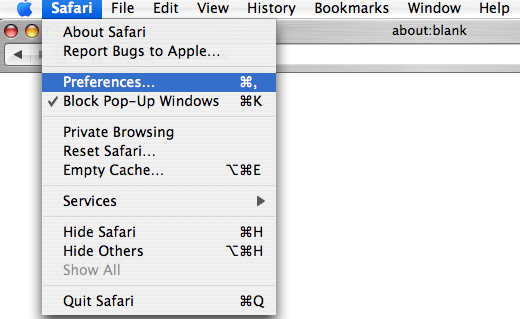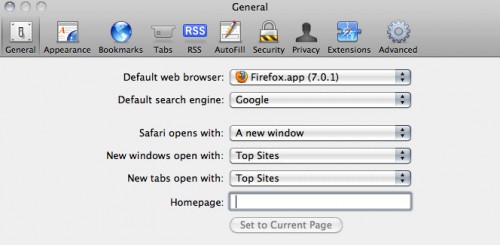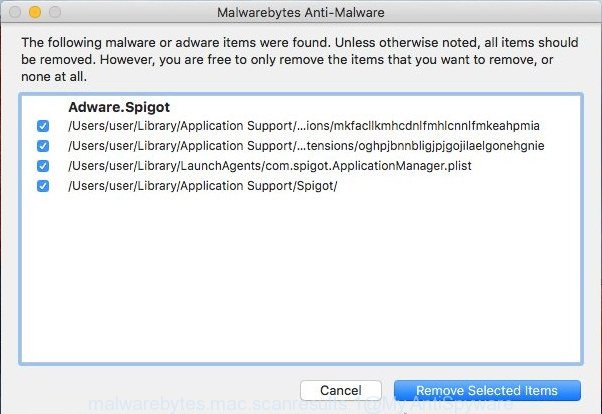Q. How do I delete ForBrowser 1.0 extension from Safari web-browser? I’ve tried everything I can find online and nothing is working. Just wanna know if someone has any tips.
A. Did it occur after installing any new programs? Sounds like you have possibly encountered an adware problem. The fix for that problem is ‘reset browser settings’ and run adware removal tools. What is the purpose of Adware? Adware is a term that originates from ‘ad supported’ software. In most cases, ‘adware software’ is considered by many to be synonymous with ‘malware’. Its purpose is to generate money for its author by presenting unwanted ads to a user while the user is browsing the Internet.

Unwanted ads
Even worse, adware be able to gather lots of personal information about you (your ip address, what is a web-site you are viewing now, what you are looking for on the World Wide Web, which links you are clicking), which can later transfer to third parties.
Adware software gets onto Mac by being attached to certain free applications. So always read carefully the setup screens, disclaimers, ‘Terms of Use’ and ‘Software license’ appearing during the install process. Additionally pay attention for optional software which are being installed along with the main program. Ensure that you unchecked all of them! Also, use an ad-blocker application that will help to stop shady and untrustworthy web sites.
Threat Summary
| Name | ForBrowser |
| Type | adware software, PUP (potentially unwanted program), popups, pop up virus, pop-up advertisements |
| Symptoms |
|
| Removal | ForBrowser removal guide |
We recommend to delete the ForBrowser adware as soon as you found this issue, as it can redirect your web-browser to web-resources which may load other malicious software on your computer.
How to Remove ForBrowser app from Mac (Virus removal guide)
If you have unwanted apps or browser extensions, slow MAC, crashing machine problems, you are in need of adware removal assistance. The step-by-step guidance below will guide you forward to get ForBrowser adware removed and will assist you get your Apple Mac operating at peak capacity again.
To remove ForBrowser, perform the steps below:
- How to manually remove ForBrowser
- Use free malware removal tools to completely remove For Browser
- Use AdBlocker to stay safe online
- To sum up
How to manually remove ForBrowser
To delete ForBrowser virus, adware and other unwanted programs you can try to do so manually. Unfortunately some of the adware won’t show up in your program list, but some adware software may. In this case, you may be able to get rid of it via the uninstall function of your MAC. You can do this by following the steps below.
Uninstall ForBrowser by using the Finder
First method for manual adware removal is to go into the Finder, then Applications. Take a look at the list of applications on your machine and see if there are any questionable and unknown software. If you see any, you need to remove them. Of course, before doing so, you can do an Internet search to find details on the program. If it is a potentially unwanted application, adware or malware, you will likely find information that says so.
Open Finder and click “Applications” as displayed in the figure below.

You will see a list of applications installed on your MAC OS. We recommend to pay maximum attention to the application you installed last. Most probably, it is the ForBrowser. If you are in doubt, you can always check the application by doing a search for her name in Google, Yahoo or Bing. When the program which you need to remove is found, simply right click on its name, and choose “Move to Trash”.
Don’t forget, select Finder, then “Empty Trash”.
Remove ForBrowser adware software from Google Chrome
If you have adware software problem or the Chrome is running slow, then reset Chrome settings can help you. In the steps below we will show you a solution to reset your Chrome settings to default values without reinstall. This will also help to remove ForBrowser adware from your web browser.

- First, launch the Google Chrome and click the Menu icon (icon in the form of three dots).
- It will show the Google Chrome main menu. Choose More Tools, then press Extensions.
- You’ll see the list of installed addons. If the list has the addon labeled with “Installed by enterprise policy” or “Installed by your administrator”, then complete the following steps: Remove Chrome extensions installed by enterprise policy.
- Now open the Chrome menu once again, click the “Settings” menu.
- Next, press “Advanced” link, which located at the bottom of the Settings page.
- On the bottom of the “Advanced settings” page, click the “Reset settings to their original defaults” button.
- The Google Chrome will open the reset settings dialog box as shown on the image above.
- Confirm the web-browser’s reset by clicking on the “Reset” button.
- To learn more, read the blog post How to reset Google Chrome settings to default.
Delete For Browser from Firefox
Resetting Mozilla Firefox web-browser will reset all the settings to their original state and will remove ForBrowser adware, malicious add-ons and extensions. When using the reset feature, your personal information like passwords, bookmarks, browsing history and web form auto-fill data will be saved.
Press the Menu button (looks like three horizontal lines), and press the blue Help icon located at the bottom of the drop down menu as on the image below.

A small menu will appear, click the “Troubleshooting Information”. On this page, click “Refresh Firefox” button as shown below.

Follow the onscreen procedure to restore your Mozilla Firefox internet browser settings to their original settings.
Delete ForBrowser from Safari
If you find that Safari internet browser settings like newtab page, homepage and default search engine having been replaced by ForBrowser adware that causes lots of undesired pop-up advertisements, then you may return your settings, via the reset web-browser procedure.
Click Safari menu and choose “Preferences”.

It will open the Safari Preferences window. Next, click the “Extensions” tab. Look for unknown and suspicious extensions on left panel, choose it, then click the “Uninstall” button. Most important to remove all unknown extensions from Safari.
Once complete, click “General” tab. Change the “Default Search Engine” to Google.

Find the “Homepage” and type into textfield “https://www.google.com”.
Use free malware removal tools to completely remove For Browser
The easiest solution to delete ForBrowser is to run an anti malware program capable of detecting adware. We advise try MalwareBytes Anti Malware or another free malware remover that listed below. It has excellent detection rate when it comes to adware, browser hijacker infections and other PUPs.
Automatically remove ForBrowser with MalwareBytes
We suggest using the MalwareBytes Free. You can download and install MalwareBytes Anti-Malware to detect adware and thereby get rid of ForBrowser from your browsers. When installed and updated, this free malware remover automatically searches for and deletes all threats present on the MAC.

- Visit the page linked below to download MalwareBytes.
Malwarebytes Anti-malware (Mac)
20944 downloads
Author: Malwarebytes
Category: Security tools
Update: September 10, 2020
- After the download is finished, close all apps and windows on your MAC. Open a file location. Run the downloaded file and follow the prompts.
- Press the “Scan” button for checking your MAC system for the ForBrowser adware software that cause annoying ads to appear. While the MalwareBytes Anti-Malware (MBAM) is checking, you can see how many objects it has identified either as being malicious software.
- As the scanning ends, MalwareBytes Anti-Malware (MBAM) will produce a list of unwanted programs and adware software. Once you’ve selected what you wish to delete from your Apple Mac click “Remove Selected Items”.
Use AdBlocker to stay safe online
In order to increase your security and protect your Apple Mac against new unwanted advertisements and malicious web pages, you need to run ad blocking application that blocks an access to harmful advertisements and webpages. Moreover, the program can block the show of intrusive advertising, that also leads to faster loading of web-sites and reduce the consumption of web traffic.

AdGuard can be downloaded from the following link.
3753 downloads
Author: © Adguard
Category: Security tools
Update: January 17, 2018
When downloading is complete, start the downloaded file. You will see the “Setup Wizard” screen. Follow the prompts.
Each time, when you start your MAC system, AdGuard will launch automatically and stop undesired pop up ads, block harmful or misleading websites.
To sum up
Once you have finished the guidance outlined above, your Apple Mac should be free from ForBrowser adware and other malicious software. The Mozilla Firefox, Google Chrome and Safari will no longer redirect you to various undesired web sites. Unfortunately, if the steps does not help you, then you have caught a new adware, and then the best way – ask for help here.

















